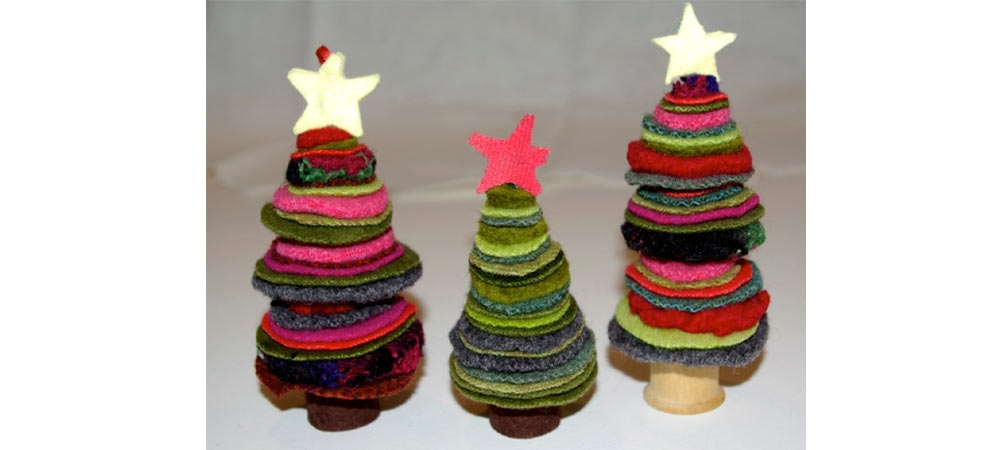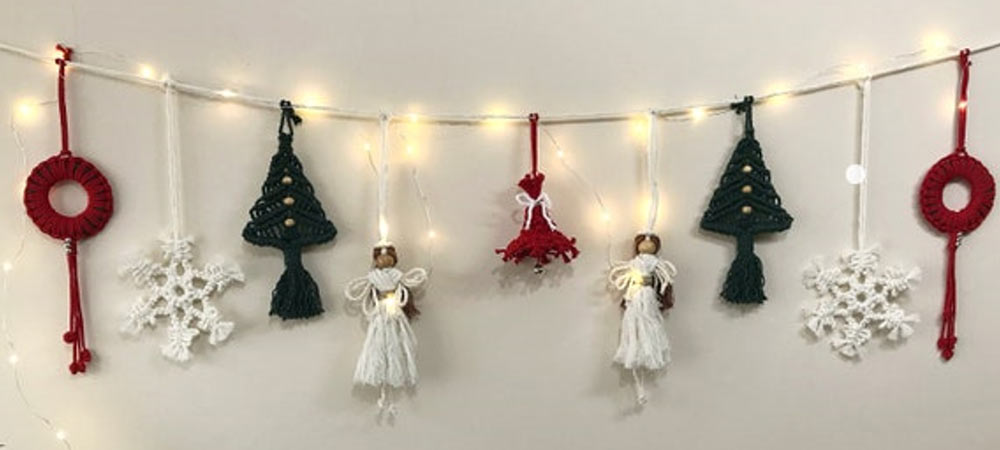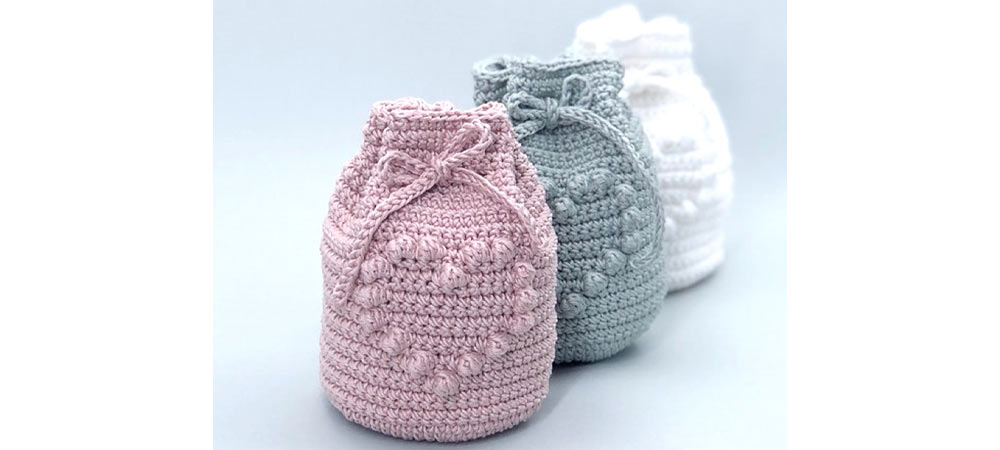Knitting and Crocheting DIY Christmas Decor with Symfonie Yarns
- Blog Views : 69
- Symfonie Yarns
- 22Dec, 2023

With the holiday season on our doorsteps, why not let your creativity shine and turn the Holidays into a celebration of sustainability? The essence of a genuinely festive holiday lies in thoughtful practices and embracing crafts like knitting and crocheting, which are not only environmentally friendly but also give your festive decorations and gifts individuality and meaning.
In this blog post, we will explore ideas and practices to help you create a merry and kind Christmas for our planet. From using sustainable fibers in your knitting and crocheting projects to upcycling materials for unique decorations, our tips will make your holiday celebrations beautifully adorned with handmade charm.
Sustainable Fibers for DIY Crafts
When choosing yarn for your knitting or crocheting, consider where the fiber comes from, how it's processed, and its environmental impact. It's also important to check if it can break down naturally over time. While fibers made from recycled plastic can help cut down waste initially, they might not be the best choice in the long run. This is because they can release microplastics, which harm the air and oceans.
Merino wool
Look for ethically sourced wool or wool from small, sustainable farms. Symfonie hand-dyed Merino wool comes from Merino sheep, renowned for their exceptionally soft fleece, providing not only an extremely plush texture; Merino wool's eco-friendliness lies in its natural, renewable properties from start to finish.
Because Merino sheep graze on free pasture during the day, they help absorb CO2, thus naturally mitigating greenhouse gas emissions. It's also water-efficient, needing less water than fibers like cotton, making it an eco-conscious choice for crafting.
Moreover, most of our dyes like those used for our Flora line are derived from plant, animal, or mineral sources and do not contain the synthetic chemicals found in many commercial dyes. These natural substances are more environmentally friendly, as they are often biodegradable and less toxic.
Organic Cotton
Grown without harmful pesticides and chemicals, organically produced cotton is a decent, sustainable choice for your Christmas projects.
However, cotton is one of the most water-intensive crops, even if produced organically. Growing requires a significant amount of water, which can lead to water scarcity in already dry regions. In contrast, wool, a natural fiber sheep produce, requires less water. Sheep need water for their sustenance, but the overall water footprint for wool production is typically lower than cotton's.
Sustainable Knitting and Crocheting Projects for Christmas
Using natural, sustainable fibers and materials in your Holiday crafts helps the environment and brings a homemade and sustainable charm to your holiday decor.
Christmas Tree Ornaments made from wool felt

Image Credit: Noelleodesigns
Yes, you read right. You can easily make wool felt from leftover yarn, and it's a great way to repurpose scraps from previous knitting or crocheting projects. The process works best with yarns that are 100% wool, especially those that are not treated to be superwash (as the superwash treatment prevents felting).
Materials needed for the felting process
- Leftover 100% wool yarn
- A container for hot water
- Dish soap
- A surface for felting (like a washboard or a bamboo sushi mat)
- Towel
To felt leftover wool yarn, wind it into balls or shapes, then soak it in hot soapy water. Agitate gently by hand or against a surface until it felts, appearing matted and compact, then rinse in warm water and lay on a towel to dry without wringing. You can form the felt into shapes like stars, trees, or snowflakes and decorate them with stitching or beads.
Tips for wool felt
- While the yarn is still wet and pliable, you can shape it as desired.
- Or, let it dry and use templates to cut out ornaments.
- Try blending different yarn colors for a unique felted look.
Angelic Holiday Garland
Craft a festive garland by crocheting small motifs like angels or stars and stringing them together. See below our step-by-step guide to creating a simple yet charming angel, a project suitable for those with basic crochet skills.

Image Credit: etsy.com
Materials Needed:
- Crochet hook (size suitable for your yarn, usually a smaller hook for finer details, like 2.5 - 3.5 mm)
- Fine yarn or crochet thread (white or Jasmine for a traditional angel)
- Scissors and darning needle
- Stiffening solution (like sugar water or fabric stiffener)
To crochet the angel ornament, create the 3D head and a flat body in continuous rounds and back-and-forth rows, respectively, using single crochets for the head and double crochet stitches for the body. Next, crochet two wings separately and sew them onto the back. Finish with an optional halo sewn onto the back of the angel’s head. Then stiffen the finished project with a solution like sugar water and add a loop or ribbon for hanging on the Christmas tree.
Reusable Gift Bags
Knitted pouches are great for gift wrapping and can be reused to store small items, making them a versatile addition to anyone's eco-friendly practices.
To knit or crochet reusable gift pouches, begin by determining the desired size. For knitting, create a rectangle using stitches like a garter or stockinette, fold it, and seam the sides.

Image Credit: etsy.com
For a crocheted bag, start with a chain base of the desired width and work in rows to form the rectangle, then fold and seam.
Optionally, you can decorate your sustainable pouches with embroidered motifs using leftover yarn or incorporate patterns directly into the bag using the fair isle technique in knitting and crocheting. Embellished with unique touches, your pouches will provide a sustainable and personalized alternative for gift wrapping.
Tips for Extra Sustainability
Durability: Knit or crochet tightly enough to ensure durability so your projects can be reused often. Consider using a smaller needle or hook size for a neat, tight stitch pattern if your stitches are looser. Tighter stitches create a denser fabric, less prone to wear and tear compared to a loose stitch pattern. Thus, your handcrafted projects are more resilient to regular handling and washing, which extends their lifespan.
Washable Yarn: Ensure the yarn you choose is washable, as your DIY decorations and decor items may need cleaning after repeated uses. Projects made from superwash Merino wool are durable and can last a lifetime.
All Symfonie Yarn lines offers hand dyed fibers choice for your Holiday DIY crafts, aligning perfectly with the spirit of a green Christmas. Whether crafting Christmas tree ornaments or knitting reusable gift pouches, our yarns ensure that your holiday decor and gifts look stunning and are kind to our planet.
-
- 14 Apr,2025
-
- 10 Apr,2025
-
- 07 Apr,2025
-
- 04 Apr,2025
-
- 01 Apr,2025
-
- 28 Mar,2025
Copyright © Symfonie Yarns 2025 - all rights reserved | RSS Feed
